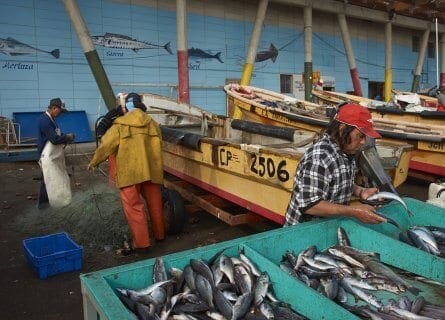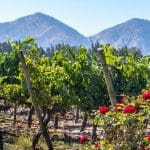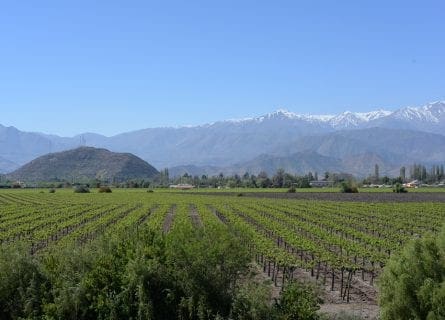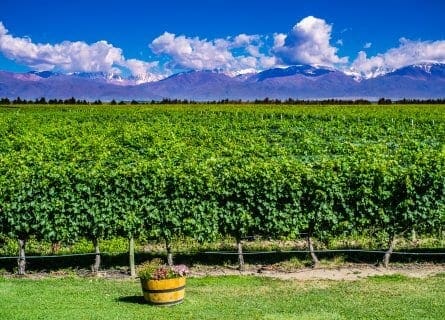Valparaiso Travel Guide
Valparaiso: Where History, Culture, and Vibrant Nightlife Converge by the Pacific
Valparaiso, one of the Pacific’s busiest ports, is more than just a beautiful hotspot of trade and commerce for Chile. In culture, nightlife, art, and sport, it rivals Chile’s capital, Santiago, and many of South America’s greatest cities. Locals proudly refer to Valparaiso as “The Jewel of the Pacific,” after a short stay in the city, it’s easy to see why. It was declared a UNESCO World Heritage Site in 2003, a fact that visitors will often be reminded of. Although many historical monuments exist in the old part of Valparaiso, the city is best known for its urban creativity today; its buildings, bars, restaurants, and parks speak of bold contemporary design.
Ancient Roots and Indigenous Heritage
What today constitutes Valparaiso was initially inhabited by native Indians, who saw the potential of the bay of Valparaiso for fishing and established a settlement lining the seafront. Historians disagree as to whether the area was colonized by the Changos, seafaring nomads, or the Picunches Indians, who grew crops inland from the bay. We know that native Indians lived and prospered for thousands of years in Chile, and Valparaiso thrived as a settlement and important fishing village.
The native Indians’ peaceful existence was shattered by the arrival of the Spanish conquistador in the 16th Century. Over the Century, the Spanish took control of most of South America, including Chile. History records that in 1536, the Spanish invaders, led by Diego de Almagro, landed in the Valparaiso bay. He would subsequently become famous for being the first European explorer of Chile and wasted no time in claiming the settlement in the name of the Spanish Empire. It was named after the ship’s captain, Juan de Saavedra, a native village back home.
Valparaiso Under Spanish Rule
The Spanish controlled Chile for several centuries, establishing several ports and settlements along the Pacific coast, and the country’s capital, Santiago in particular, prospered from trade with neighboring countries and Europe. However, the Spanish largely sidelined Valparaiso, or simply Valpo as it was affectionately known. Despite its great potential for sea trade and development, its rulers largely ignored it. It was a provincial fishing village with very few inhabitants in the 17th and 18th centuries.
Independence and Prosperity
Salvation came from Chile’s Independence from Spain in the 19th Century. People all over the country rejoiced when Chile was proclaimed an independent republic on February 12th, 1818. The transition occurred with relative ease, and during the mid-19th Century, Valparaiso became an area of increasing importance to the new Chilean government. They needed a central base to operate their new navy fleet, so Valparaiso became Chile’s navy harbor.
In the late 19th Century, the city got into its stride; this ‘golden era’ was mainly fueled by the opening up of international trade, which, before 1818, had been limited to Spain and her colonies. Its population grew as immigrants from poorer regions of Chile and abroad came to Valparaiso to take advantage of this newfound prosperity. New buildings, including hospitals, civic centers, and parks, were constructed; the city had never had it so good. It also became an important port for ships traveling between the Atlantic and Pacific oceans. Valparaiso changed considerably during this period; not only was the image and importance of the city transformed, but great cultural changes also occurred. No longer a provincial Chilean backwater, its wealth and sea trade attracted many immigrants from Europe who brought their language and culture with them. A vibrant melting pot of different cultures emerged, exemplified by the various language newspapers printed throughout the city!
Tragedy and Resilience: The 1906 Earthquake
Sadly, this prosperity was overshadowed by a devastating earthquake that struck the city in 1906. Valparaiso greeted the 20th Century with destruction and chaos; over 5000 of the city’s residents lost their lives. However, the city was determined to build something positive out of the tragedy and opened the Carlos Van Buren Hospital in 1912, which is dedicated to earthquake victims.
The city was largely unaffected by the advent of the Two World Wars in Europe, being geographically isolated from the conflict. Of far greater significance was the opening of the Panama Canal in 1914. This project, for the first time in history, allowed ships to easily pass from the Atlantic to the Pacific Ocean via an artificial canal through the center of Panama. Wishing to avoid the treacherous and hazardous passage around Cape Horn, many ships avoided the journey via southern Chile, so visitors to Valparaiso’s harbor reduced drastically. The economy suffered, and unemployment rose sharply in the 1920s and 30s.
However, the citizens of Valparaiso have always maintained a spirit of optimism, and the city has recovered from the loss of sea trade, emerging in a stronger position in the last 20 years. The city has re-established itself as an important trading port in South America because of a rise in agricultural exports. Perhaps of great importance is the urban renewal that has taken place; the city now leads the way in cutting-edge architecture and has recovered quickly from the earthquake that struck Chile in February 2010.
Today, visitors to this wonderful harbor city are seriously spoilt with a wealth of historical buildings, incredible natural beauty, and unique architecture. Many famous and historically significant figures have called Valparaiso their home, including Augusto Pinochet and the artist and philosopher Pablo Neruda. Still, we know why tourists visit Valparaiso – its legendary nightlife, bohemian bars, and pubs where sailors, students, writers, and tourists socialize well into the morning. Welcome to Chile!
-

Local fisherman cleaning and sorting fish Gastronomy & Wine
Valparaiso is justly famed throughout Chile for its nightlife, a large collection of bars, cafes, clubs, and restaurants where students, poets, office workers, and tourists socialize until the small hours. Closing time is not a well-understood word here! Visitors can expect a fantastic selection of seafood and should start their search in the city’s Muelle (Wharf) district. When not enjoying fish, locals munch on a Chorillana, French fries topped with onions, eggs, and a steak. It hits the spot after a hard night spent partying.
As we have highlighted, local cuisine revolves around high quality, local ingredients in season, and abundant fresh seafood. Discerning locals head to the Vina del Mar part of town for a selection of high-class restaurants and a smattering of international ones, Argentina beef, and Mexican food being in good supply.
If you are ready for a glass of wine, look no further. Chile has an astonishing variety of diverse wine regions and styles; light, aromatic whites and full, intense, delicious reds are abundant. Cabernet Sauvignon, grown in Rapel, equals the best in the world; Chile’s signature grape variety, Carmenere, works very well with their hearty stews and meat dishes.
Highlights
-
La Sebastiana
One of the three houses that the Chilean Poet, Pablo Neruda called his home. The house is open throughout the year to visitors and is a fantastic insight into Neruda’s work. Nearby is the charming Plaza de Las Poetas which fills with students and artists in the summer, enjoying an aperitif on the square.
-
Cerro Concepcion
The old town of Valparaiso throngs with visitors during the holiday season. Its historic alleyways, cafes, and restaurants are the main attraction for tourists. Enjoy getting lost in this lovely quarter; make sure to take in the view of the city from Paseo Gervasoni!
-
Viña del Mar
This small, adorable beach town referred to as the garden city is easily accessible from Valparaiso, being just a 15-minute train ride from downtown. An essential break from the noise and chaos of the city, locals enjoy walking along the beach in the evening and taking a drink in one of the many delightful seaside cafes. Also worth a look is the Viña del Mar castle.
-
Museo de Cielo Abierto de Valparaiso
A must see for art lovers, the Museum houses the works of many famous Chilean artists. This museum is actually an outdoor exhibit of murals adorning the streets of Cerro Bellavista, created in 1969 for students from the local Catholic university.
Recommended for you
More information
If you would like us to customize an exclusive luxury tour, contact us and let us know your travel plans. We offer luxury food and wine tours for private groups of a minimum two guests. In addition, all of our private, chauffeured tours are available year-round upon request.




